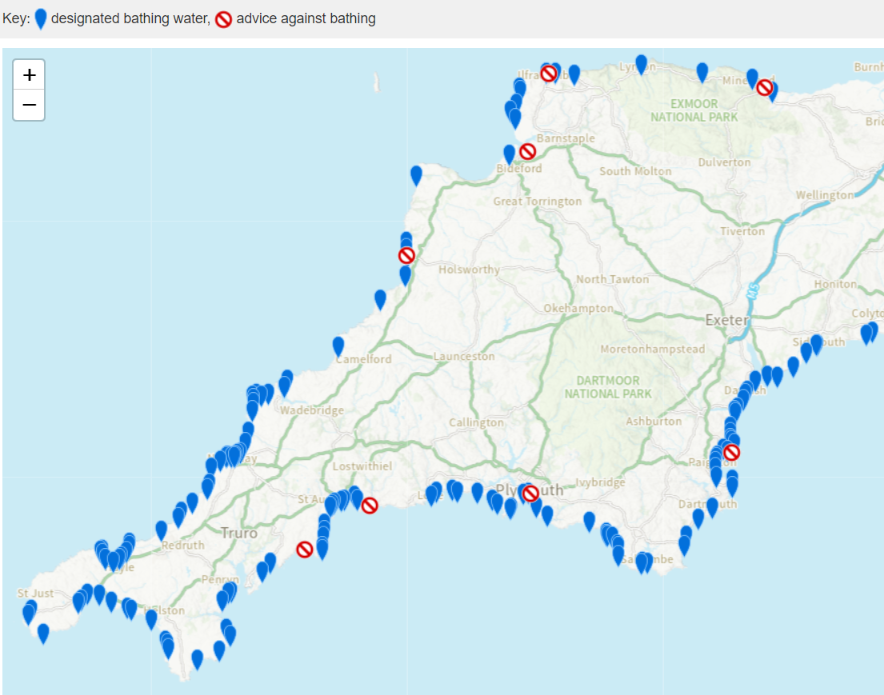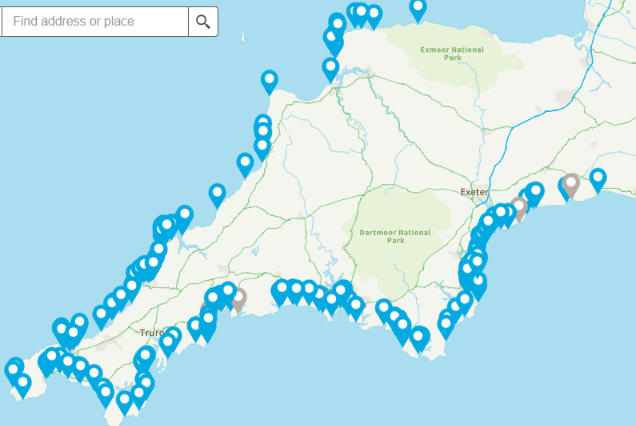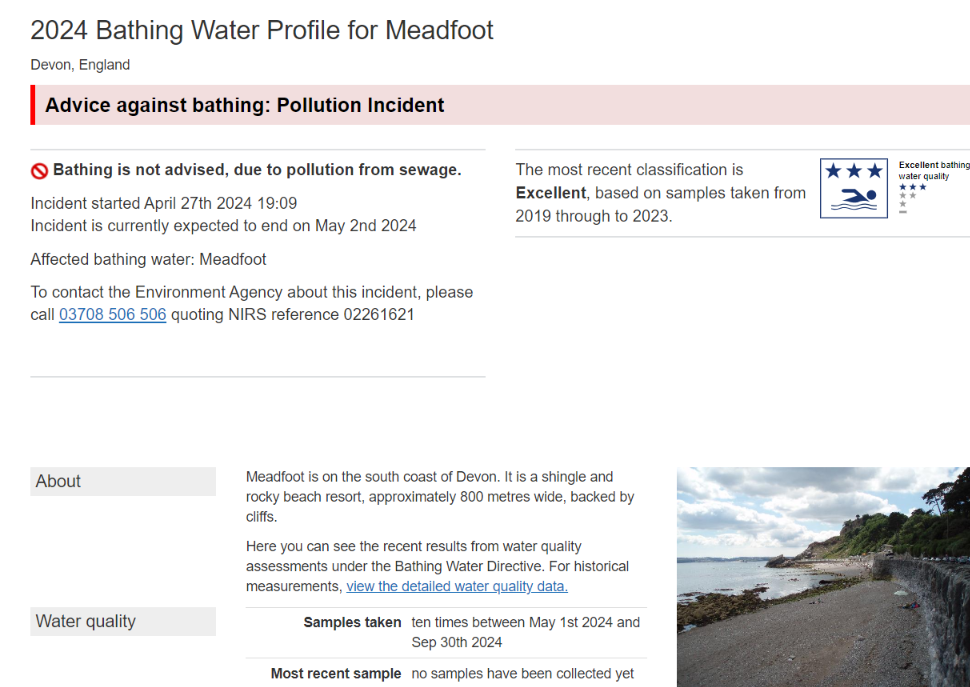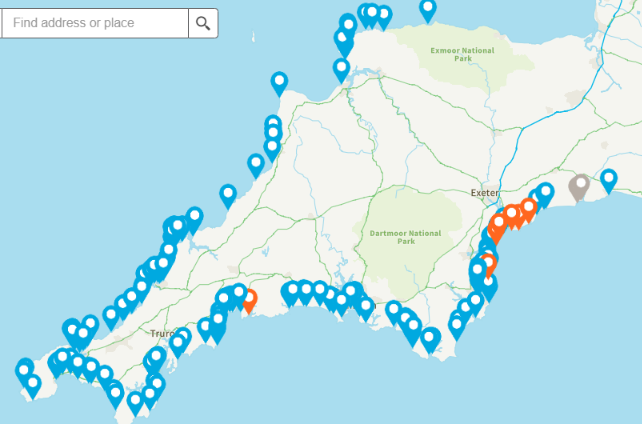Bathing Water Quality Testing in May 2024
On May 1st the Environment Agency started regular bacteriological testing of the water at South West England's designated bathing beaches. The second round of such tests are underway, and lots…
On May 1st the Environment Agency started regular bacteriological testing of the water at South West England's designated bathing beaches. The second round of such tests are underway, and lots…
The May bank holiday is rapidly approaching, RNLI lifeguards are now patrolling the beaches of Devon and Cornwall and the Environment Agency has started issuing pollution risk warnings for designated bathing beaches. Here’s how their map looks today:

Here too is today’s WaterFit Live map from South West Water:

Meadfoot beach in Torbay isn’t “red flagged” on SWW’s map, but according to the Environment Agency there has been a sewage pollution incident affecting the beach today:

Here is this morning’s WaterFit Live map:

A press release by the University of Reading earlier this week claims that:
The UK’s bathing water forecasts need urgent improvement to prevent beach goers from swimming in sewage without warning.
The University is publicising a review paper in the journal WIREs Water entitled “Forecasting bathing water quality in the UK: A critical review” that was first submitted in December 2022. According to the press release:
With increasing attention on UK water companies and others to clean up rivers and beaches, the review, published in WIREs Water, suggests current bathing water forecast models are not keeping the public safe at most of the UK’s 600-plus designated bathing water locations.
The current outdated methods cannot accurately predict threats from pollution caused by sudden downpours, the scientists say. Heavy rain can lead to sewage overflows or agricultural run-off. In addition, a lack of water quality sampling and outdated forecast methods leave people vulnerable to sudden increases in chemicals or bacteria in the water.
With coastal and wild swimming becoming more popular, local authorities urgently need to make use of improved forecasting techniques to identify the dangers from bugs such as E. coli or intestinal enterococci, which can be lethal, the researchers said.
According to lead author Karolina Krupska:
(more…)We expect beaches that are designated for swimming to be clean and safe, but authorities often don’t have good enough information to issue warnings, leaving swimmers and surfers more vulnerable to getting ill. The way we manage our sewage and land means rivers and seas are frequently polluted, and heavier summer downpours due to climate change is making the problem worse at the time of year when people are most likely to be at the beach.
With existing pollution warning systems, beach users don’t have good enough information to decide whether it is safe to go in the water. The science underpinning the next generation of bathing forecasting already exists, but a lack of action means these solutions have not been implemented.
We need a more reliable and frequently updated early warning system, to ensure people can safely enjoy a coastal swim with the confidence that they aren’t putting themselves at risk.